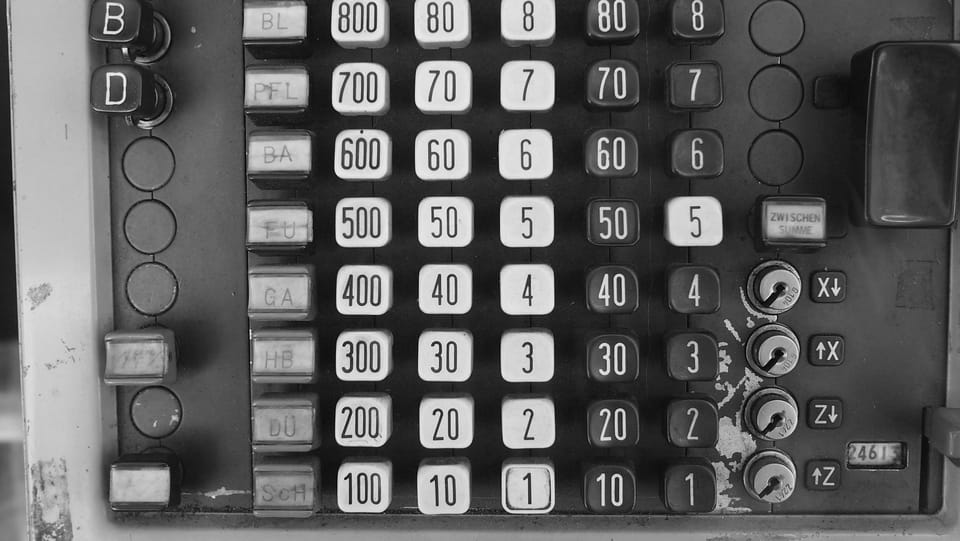How Much Time Do You Waste on Admin Tasks?

Calculate the Real Cost
As a freelancer or small business owner, you probably know that feeling: You're busy all day, but somehow you're not getting the important work done.
The culprit? Administrative tasks that eat away at your productive time without you realizing it.
This calculator shows you exactly how much time you're wasting and what it's costing you. No complex formulas, no tool recommendations – just the brutal truth about where your time goes.
Why This Matters More Than You Think
Most freelancers underestimate how much time they spend on admin work. Email management, invoicing, file organization, client communication – it all adds up.
The hidden cost isn't just the time itself. It's the opportunity cost of what you could be doing instead:
- Taking on more clients
- Working on strategic projects
- Actually having a life outside work
How the Calculator Works
Enter three simple numbers to see the real cost of your workflow chaos:
Admin hours per week: Be honest. Include email management, invoicing, file organization, client communication, project setup. Most freelancers spend 15-25% of their time on admin tasks.
Your hourly rate: Use what you actually earn per hour, not your dream rate. If you charge per project, divide total revenue by total hours worked (including admin time).
Optimization potential: How much of your admin time could be streamlined with better processes? Start conservative (40-60%). Not everything needs to be complex – sometimes it's just about having a system.
⏰ Workflow Optimization Calculator
Discover how much time you're wasting and what it's costing you
Learn how to optimize your workflows →
Understanding Your Results
The Big Number: Value of Wasted Time
That large euro amount? That's not money you're losing – it's money you're not making because you're stuck in administrative chaos instead of doing productive work.
Time Saved Per Week
Even saving 2-3 hours per week makes a difference. That's time for:
- An additional client project
- Business development
- Actually finishing work at a reasonable hour
Annual Hours & Work Days
Seeing your wasted time converted to full work days is often shocking. Those are days you could spend on revenue-generating activities instead of shuffling papers and managing emails.
What These Numbers Really Mean
If your annual value is €5,000-€10,000:
You have a moderate optimization opportunity. Focus on your biggest time-wasters first. Simple process improvements could give you back 1-2 hours per week.
If your annual value is €10,000-€20,000:
You have a significant opportunity. Your workflow chaos is costing you serious money. Systematic process optimization should be a priority.
If your annual value is €20,000+:
You have a critical situation. You're essentially working for free several days per year. Without systematic changes, you'll burn out or miss major business opportunities.
The Reality Check
These numbers assume you'd use the saved time productively. If you'd just watch Netflix with the extra hours, the financial benefit is zero.
But here's what usually happens: When you stop drowning in admin chaos, you naturally start focusing on higher-value activities. You take on better clients, work on strategic projects, or simply have the mental energy to do better work.
Common Reactions to These Numbers
"That can't be right – I'm not wasting that much time!"
Track your time for a week. You'll be surprised how much goes to admin tasks you don't even notice.
"I can't optimize that much of my admin work!"
You're probably right. Start with 20-30% and work your way up. Even small improvements compound over time.
"I don't have time to optimize my workflows!"
This is like saying you don't have time to sharpen your axe because you're too busy chopping wood. The optimization pays for itself quickly.
What NOT to Do With These Numbers
Don't rush to buy expensive automation tools. Most workflow problems are process problems, not tool problems.
Don't try to optimize everything at once. Start with your biggest pain points and work systematically.
Don't assume automation is always the answer. Sometimes the best optimization is just having a clear process and sticking to it.
The Real Solution: Systematic Thinking
The goal isn't to eliminate all admin work – some of it is necessary and valuable. The goal is to do it efficiently and intentionally instead of reactively.
This means:
- Understanding your workflows before trying to improve them
- Identifying the real bottlenecks vs. the obvious ones
- Making systematic changes that actually stick
- Measuring results to ensure improvements are real
Your Next Steps
If your numbers showed significant time waste, here's how to proceed:
Step 1: Map Your Current Reality
Before optimizing anything, understand exactly what you're doing now. Most people skip this step and end up optimizing the wrong things.
Step 2: Identify Your Biggest Pain Points
Not all admin tasks are created equal. Focus on the ones that are:
- Highly repetitive
- Time-consuming
- Error-prone
- Interrupting your flow
Step 3: Start with Process, Not Tools
Ask "How can I do this better?" before asking "What tool can do this for me?" Often the best optimization is just having a clear, consistent process.
Step 4: Implement One Change at a Time
Make one improvement, let it become a habit, then move to the next. Trying to change everything at once usually results in changing nothing.
Step 5: Measure and Adjust
Track your actual time savings. What works in theory doesn't always work in practice.
Ready to Stop Wasting Time?
The calculator shows you the potential – but potential means nothing without systematic action.
If you're serious about transforming your workflow chaos into an efficient system, you need more than good intentions. You need a systematic approach that actually works.
Learn the systematic approach to workflow optimization →
It's not about tools or quick fixes. It's about developing the systematic thinking that makes real optimization possible.
Frequently Asked Questions
Q: Are these calculations accurate?
A: The calculator provides estimates based on your inputs. The real value depends on how you use the saved time. Most people achieve 60-80% of their calculated potential.
Q: What if I don't know my exact numbers?
A: Use your best estimates. Even rough numbers will show you whether workflow optimization is worth pursuing. You can always refine the calculation as you gather more data.
Q: Should I optimize if my numbers are low?
A: Low numbers might mean you're already efficient, or that you're underestimating your admin time. Track your time for a week to get more accurate data.
Q: What's the difference between optimization and automation?
A: Optimization is about doing things better. Automation is about having tools do things for you. Always optimize first – automating a bad process just gives you bad results faster.
What did your calculation reveal? The numbers don't lie – but changing them requires systematic action, not wishful thinking.
